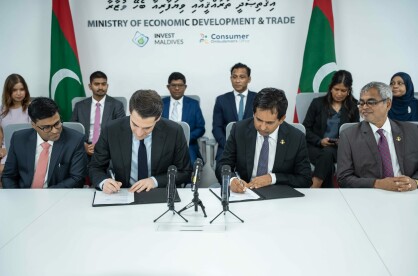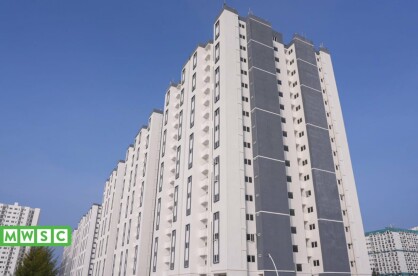COVID-19 funding and expenditure
Government needs to set-up systems to minimise the risk of corruption and also to spend strategically with a view to increase economic resilience.

Source: MNDF
Government needs to set-up systems to minimise the risk of corruption and also to spend strategically with a view to increase economic resilience.

Source: MNDF
On 9 August 2021, Minister of Finance Ibrahim Ameer announced the decision to avail a further USD30 million from the International Monetary Fund (IMF), in addition to the USD28.9 million already borrowed, to assist government efforts to cope with the impact of the COVID-19 crisis. While the country's total debt already over 130 percent of GDP (MVR86 billion), questions arise as to why the government is seeking to borrow additional funds while at the same time forecasting economic recovery, and what happened to the cash and in-kind grants provided by donor agencies and friendly countries for efforts against the pandemic.
According to data published by the Ministry of Finance (MOF), the government received USD519.8 million from international financial institutions and bilateral partners as COVID-19 assistance in 2020. The largest of this assistance came from the Indian government, as investments in domestic USD Treasury Bonds of USD250 million. Other significant funding sources were Asian Development Bank (ADB) with USD50 million, Japan International Cooperation Agency (JICA) with US$47.5 million, Islamic Development Bank (IDB) with USD35.7 million and World Bank with US$31.1 million.

The government also received over MVR1.4 billion (about USD92 million) as grants in 2020. In addition, it also received in-kind grants from various international development agencies, friendly countries, and well-wishers, in the form of COVID-19 testing kits, PPE, medicines and even vaccines, for which a value cannot be calculated. This, however, will have reduced the requirement on the government to spend out-of-pocket on these items.
A further USD870 million was received as other loans and budget financing in 2020, of which India contributed the highest bilateral assistance, followed by Japan, the Saudi Fund and the Abu Dhabi Fund each providing USD50 million. The government also borrowed over MVR4 billion (USD262 million) from the Maldives Monetary Authority in 2020. All of these contributed to fund a budget deficit of MVR16 billion (28 percent of GDP) in 2020.
It is also possible that the funding gap and overall deficit may further increase to about MVR18 billion (US$1.2 billion) and 18% of GDP in 2021, respectively, since only 8 percent of the MVR3 billion new revenue measures included in the budget for 2021 is now expected to be realised.
Like many other countries, in response to the pandemic the government activated contingency reserves in March 2020 and set aside MVR212 million. However, as the impact of the pandemic aggravated, the government created extra budgetary funds of MVR1.5 billion (US$97 million), to further mobilize resources and accelerate emergency spending. Over 70 percent of the expenditure was allocated to building quarantine faculties and on medical consumables such as PPEs. The government also announced an Economic Relief Program (ERP) of MVR2.5 billion (US$162 million) to mitigate the economic impacts of the crisis.
According to weekly data published by MOF, as of 19 August 2021, total Covid-19 related expenditure stood at a staggering MVR3.8 billion (about US$250 million). Of this, more than 55 percent was on Health and Social Spending (HSS) (MVR2.1 billion) while total spending on ERP was recorded at over MVR1.7 billion. About 76 percent of the HSS expenditure was spent by the National Disaster Management Authority (MVR870 million), with expenditure by the Ministry of Health at MVR772 million. The Indira Gandhi Memorial Hospital (IGMH), Maldives National Defense Force (MNDF) and National Social Protection Agency (NSPA) spent over MVR300 million together.

About 55 percent of HSS expenditure was on supplies and requisites for service provisions, while operational services and salaries and wages accounted for about 17 percent. However, only 13 percent was spent on capital expenditure (9 percent for capital equipment and 4 percent for land and building). As such, the majority of HSS expenditure was on recurrent expenditure while infrastructure and capital expenditure were minimal.
About 65 percent of expenditure on EPS was spent on the Covid-19 Recovery Loan Scheme for business, of which over MVR700 million was disbursed by the Bank of Maldives (BML) and MVR360 million by the SME Development Finance Corporation (SDFC). The other major category of spending, at over 24 percent, was on the Income Support Allowance, which was distributed to over 22,000 workers and the rest on subsidization of utility bills. This indicates that about 65 percent of expenditure on COVID-19 related measures, was spent on recurrent expenditure rather than capital.
According to audits carried out by the Auditor General's Office (AGO), many issues, including allegations of corruption, were noted in public spending on COVID-19 related measures. The most well-known of these instances was in the purchase of ventilators needed to treat COVID-19 cases. An audit carried out in August 2020 indicated that the Ministry of Health had not adhered to the Public Finance Regulation in its procurement of the said ventilators. After the Anti-Corruption Commission concluded its invesigations into the case and charges were made against Minister of Health Abdulla Ameen and other senior officials of the Ministry, the minister resigned.
More recently, in August 2020, similar issues were raised in a performance audit carried out by the AGO on the Income Support Allowance (ISA) scheme. The AGO noted that over MVR400,000 had been issued to 217 applicants who were in fact not eligible under the scheme. The AGO also noted that there was no medium-term policy in place to encourage staff seeking these allowances back to the job market, as well as a lack of training opportunities to allow said employees to be reskilled.
Similar issues were noted in a performance audit of the Economic Recovery Loans disbursed by the SDFC. The AGO noted that while over 54 percent of applicants had received loans, their creditworthiness and ability to repay the loans had not been established, increasing the risk of these loans being defaulted. It also noted that the procedures for how the funds are to be disbursed are not transparent, nor publicly disclosed.
According to the IMF, such types of corruption and malpractice are due to poorly designed budgetary and financial management systems. It has recommended that financial governance over COVID-19 funds be improved through tighter legal frameworks, establishing robust gatekeeping arrangements, and setting strong transparency and reporting standards, as practiced in countries such as Mauritius. Likewise, systematic reviews, audits and evaluations also need to be done continuously, as well as setting a clear 'sunset' clause, such as that implemented in Kenya.
Given that COVID-19 was a pandemic that hit the world suddenly, no country in the world was prepared to deal with a shock of this nature. However, given that the Maldives, by its very nature and high dependence on tourism, has always been very vulnerable to such shocks, it is important that part of the funds received as assistance be re-invested in diversifying the economy and in improving the socio-economic system to deal with such shocks. However, we appear not to have learnt from past instances, nor this one.



